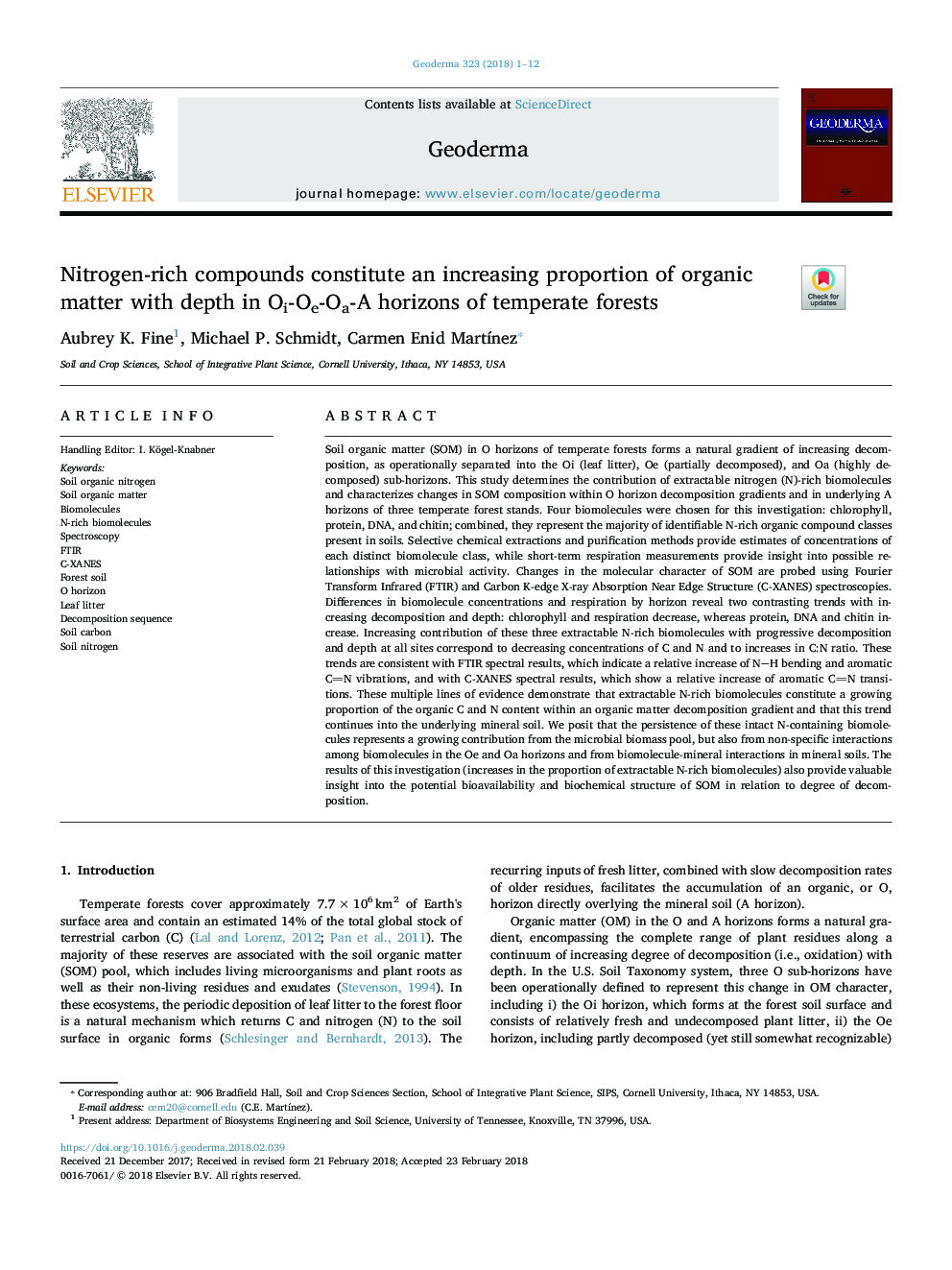| Article ID | Journal | Published Year | Pages | File Type |
|---|---|---|---|---|
| 8894024 | Geoderma | 2018 | 12 Pages |
Abstract
Soil organic matter (SOM) in O horizons of temperate forests forms a natural gradient of increasing decomposition, as operationally separated into the Oi (leaf litter), Oe (partially decomposed), and Oa (highly decomposed) sub-horizons. This study determines the contribution of extractable nitrogen (N)-rich biomolecules and characterizes changes in SOM composition within O horizon decomposition gradients and in underlying A horizons of three temperate forest stands. Four biomolecules were chosen for this investigation: chlorophyll, protein, DNA, and chitin; combined, they represent the majority of identifiable N-rich organic compound classes present in soils. Selective chemical extractions and purification methods provide estimates of concentrations of each distinct biomolecule class, while short-term respiration measurements provide insight into possible relationships with microbial activity. Changes in the molecular character of SOM are probed using Fourier Transform Infrared (FTIR) and Carbon K-edge X-ray Absorption Near Edge Structure (C-XANES) spectroscopies. Differences in biomolecule concentrations and respiration by horizon reveal two contrasting trends with increasing decomposition and depth: chlorophyll and respiration decrease, whereas protein, DNA and chitin increase. Increasing contribution of these three extractable N-rich biomolecules with progressive decomposition and depth at all sites correspond to decreasing concentrations of C and N and to increases in C:N ratio. These trends are consistent with FTIR spectral results, which indicate a relative increase of NH bending and aromatic CN vibrations, and with C-XANES spectral results, which show a relative increase of aromatic CN transitions. These multiple lines of evidence demonstrate that extractable N-rich biomolecules constitute a growing proportion of the organic C and N content within an organic matter decomposition gradient and that this trend continues into the underlying mineral soil. We posit that the persistence of these intact N-containing biomolecules represents a growing contribution from the microbial biomass pool, but also from non-specific interactions among biomolecules in the Oe and Oa horizons and from biomolecule-mineral interactions in mineral soils. The results of this investigation (increases in the proportion of extractable N-rich biomolecules) also provide valuable insight into the potential bioavailability and biochemical structure of SOM in relation to degree of decomposition.
Keywords
Related Topics
Physical Sciences and Engineering
Earth and Planetary Sciences
Earth-Surface Processes
Authors
Aubrey K. Fine, Michael P. Schmidt, Carmen Enid MartÃnez,
